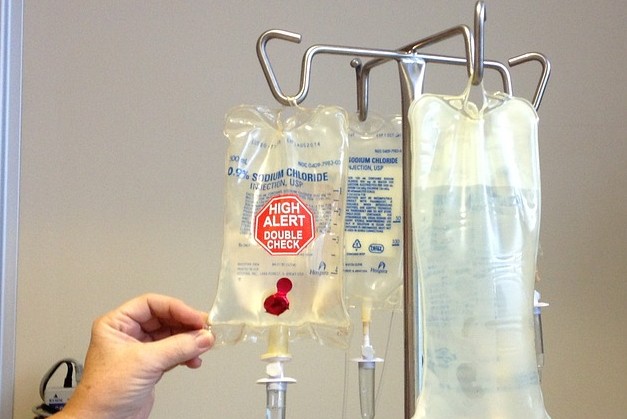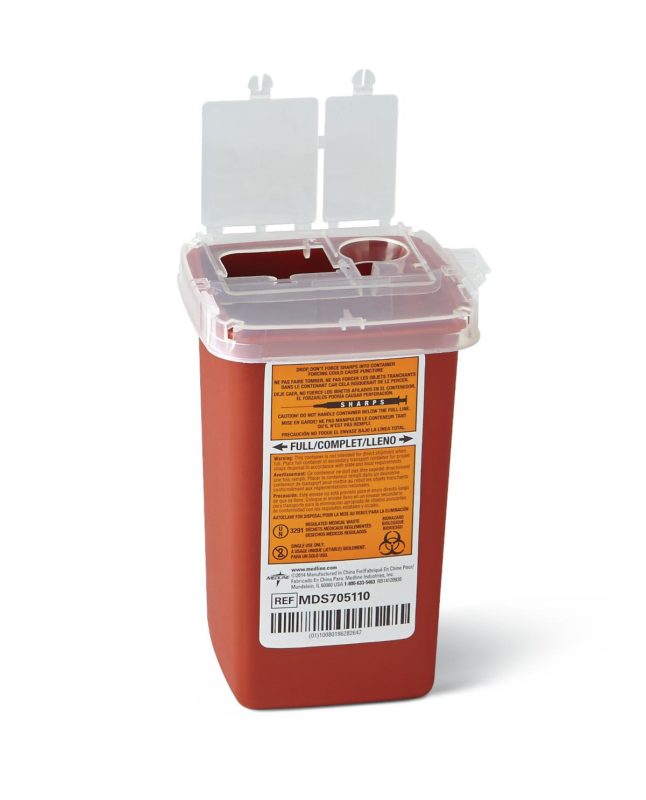Your Relied On Companion: Medical Waste Removal Services Tailored to Your Demands
Your Relied On Companion: Medical Waste Removal Services Tailored to Your Demands
Blog Article
Keep Ahead of Regulations: Specialist Guidance on Medical Waste Disposal
In a world where the health care market is constantly developing, it is crucial for medical facilities to remain in advance of policies when it comes to the proper disposal of clinical waste. From recognizing the various groups of medical waste to executing the right collection and partition methods, this conversation will provide actionable pointers and important understandings to assist centers remain ahead of guidelines in the ever-changing landscape of medical waste disposal.
Recognizing Medical Waste Categories
Recognizing clinical waste classifications is important for correct disposal and monitoring in medical care centers. Medical waste describes any type of waste created by healthcare activities that may present a hazard to public health and wellness or the environment. It is critical to categorize clinical waste precisely to guarantee its safe handling, transportation, disposal, and therapy.
There are several classifications of clinical waste that healthcare facilities require to be knowledgeable about. The most typical categories consist of transmittable waste, pathological waste, sharps waste, pharmaceutical waste, and chemical waste. Each category has certain standards and regulations for its correct monitoring and disposal.
Infectious waste includes products polluted with blood or various other bodily fluids, such as gloves, gowns, and research laboratory cultures. Pathological waste describes human tissues, organs, or body parts that need special delivery and disposal. Sharps waste consists of made use of needles, syringes, and other sharp things that can trigger injury and transfer infections. Drug waste consists of run out, unused, or contaminated drugs that need careful handling and disposal. Finally, chemical waste includes solvents, disinfectants, and other chemical materials utilized in health care facilities.
Staying Up-To-Date With Regulatory Changes
Staying present with regulative modifications is vital for medical care centers to make certain conformity and appropriate administration of medical waste disposal. medical waste removal. With laws continuously progressing, it is necessary for health care facilities to remain updated to stay clear of fines, fines, and potential injury to the atmosphere and public health
To stay in advance of governing modifications, healthcare facilities ought to establish a system for monitoring and monitoring updates. This can be done by registering for regulative newsletters, attending workshops and seminars, and actively taking part in industry organizations. Furthermore, centers must designate a team participant or team in charge of remaining informed and distributing info to relevant stakeholders.
Normal communication with governing agencies is likewise vital. Health care centers ought to develop relationships with neighborhood, state, and government agencies to ensure they know any modifications in laws that may influence their waste management methods. This can be done via regular conferences, involvement in public remark durations, and proactive interaction with governing firms.
Moreover, health care centers ought to consider partnering with waste management business that specialize in clinical garbage disposal (medical waste disposal services with WasteX). These companies are commonly fluent in the newest guidelines and can provide assistance and support to make sure conformity
Implementing Correct Collection and Segregation Methods
To efficiently handle clinical garbage disposal, health care facilities should establish appropriate collection and segregation techniques according to regulatory guidelines. Carrying out these techniques makes sure the risk-free handling and disposal of possibly unsafe materials, safeguards the atmosphere, and reduces the danger of injuries and infections to healthcare workers and the public.
Proper collection and partition approaches entail the use of assigned containers and identifying systems. Healthcare facilities need to give clearly classified containers for various kinds of medical waste, such as sharps, infectious waste, pharmaceutical waste, and non-hazardous waste. These containers should be color-coded and plainly marked to avoid complication and advertise simple identification.
Additionally, healthcare facilities should educate their personnel on the appropriate procedures for collecting and segregating medical waste. This includes enlightening them on the various sorts of waste, the ideal containers to utilize, and the relevance of complying with guidelines and regulations. Routine training sessions and correspondence course must be conducted to make certain that personnel participants remain current on finest practices.
In addition, healthcare browse around this site centers need to develop a system for regular collection and disposal of clinical waste. This may involve partnering with licensed waste administration companies that focus on clinical waste disposal. These business will make sure that the collected waste is moved and thrown away in conformity with regulative requirements.
Picking the Right Disposal Techniques

Incineration is one of the most efficient and usual techniques for dealing with specific types of medical waste, such as pathological waste and sharps. It involves the controlled combustion of waste at high temperatures, decreasing it to ash. However, incineration can launch harmful toxins right into the air and add to air pollution.

Other disposal approaches include chemical therapy, microwave therapy, and landfilling. Chemical treatment involves using chemicals to reduce the effects of the waste and sanitize. Microwave original site treatment utilizes microwave power to warm and disinfect the waste. Landfilling includes burying the waste in an assigned land fill location (medical waste disposal services with WasteX). Nevertheless, landfilling needs to be the last resort because of the prospective threat of contamination to soil and groundwater.
Making Sure Conformity Via Documents and Training
After meticulously considering the suitable disposal approaches for clinical waste, medical care centers have to make certain conformity with laws and reduce ecological effect by executing efficient paperwork and training procedures. This step is crucial in maintaining a safe and sustainable atmosphere for both health care workers and the basic public.

Health care employees that take care of clinical waste should receive appropriate training on waste segregation, managing, and disposal treatments. By supplying detailed training, health care centers can equip their staff to make informed choices and decrease the threat of inappropriate waste disposal.
Verdict
Finally, staying ahead of regulations in medical garbage disposal is crucial for medical care centers. medical waste removal. Comprehending the different categories of clinical waste, remaining updated with regulatory adjustments, applying correct collection and partition methods, choosing the ideal disposal techniques, and making sure conformity via paperwork and training are all vital steps. By adhering to these standards, healthcare companies can properly manage and get rid of of medical waste in a secure and liable manner
From understanding the different categories of clinical waste to executing the appropriate collection and partition methods, this conversation will give useful insights and actionable tips to aid facilities remain ahead of laws in the ever-changing landscape of clinical waste disposal. - medical waste disposal services with WasteX
The most typical groups consist of infectious waste, pathological waste, sharps waste, pharmaceutical waste, and chemical waste. Healthcare facilities must provide clearly labeled containers for different types of medical waste, such as sharps, infectious waste, pharmaceutical waste, and non-hazardous waste. Health care facilities should establish a comprehensive system to videotape and track all facets of clinical waste disposal, consisting of kinds of waste produced, quantities, and disposal techniques utilized. Medical care employees that manage clinical waste should receive appropriate training on waste segregation, handling, and disposal treatments.
Report this page